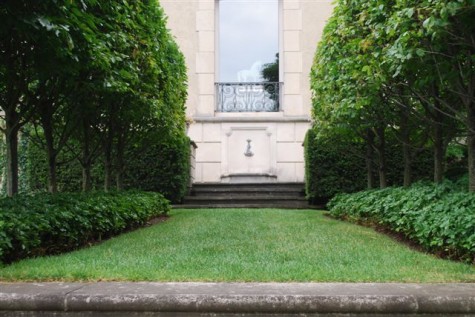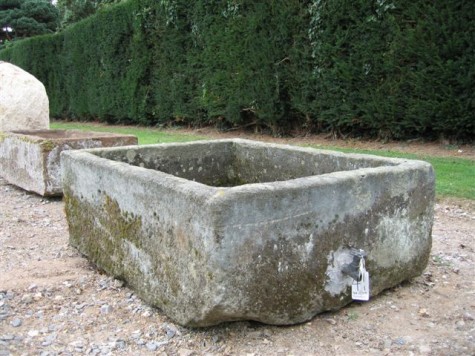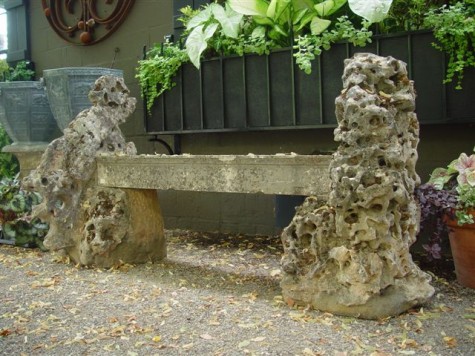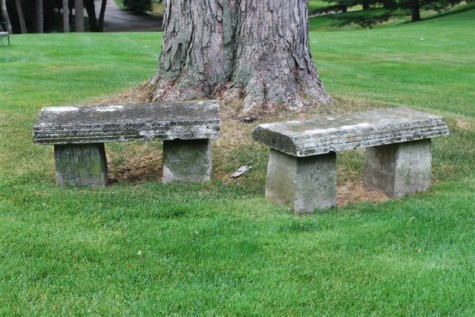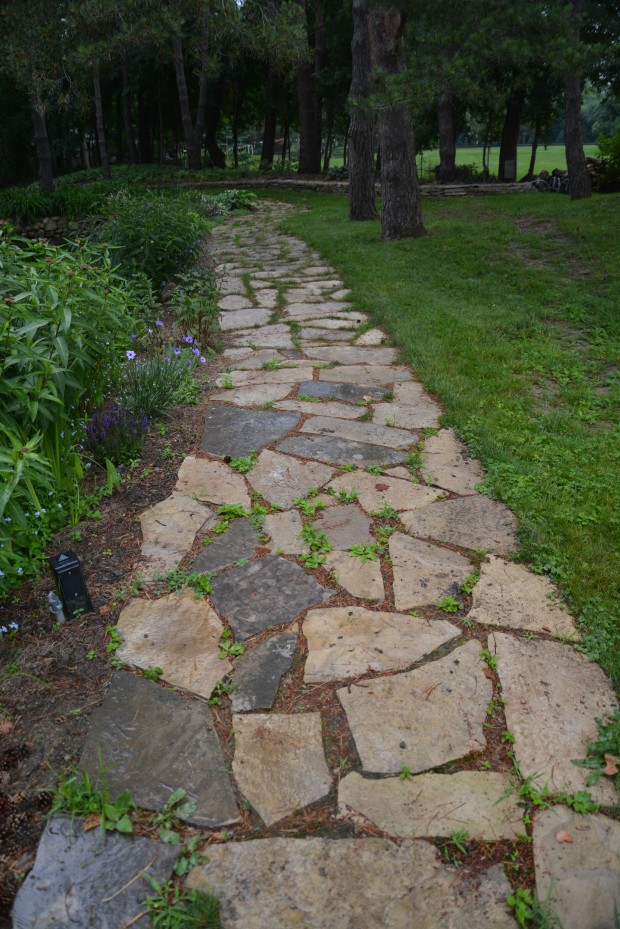 Most landscapes have walkways of one sort or another. It is a vehicle by which people are able to get from one place to another. Anyone who has even bought a pair of shoes or a car knows that there are vehicles of all different sorts. This particularly long and thin property has been owned by my clients for a good many years. They decided to build a new house on the street side of the property, the landscape of which has been an ongoing project for me since last fall. This informal stone walkway to the barn would remain intact.
Most landscapes have walkways of one sort or another. It is a vehicle by which people are able to get from one place to another. Anyone who has even bought a pair of shoes or a car knows that there are vehicles of all different sorts. This particularly long and thin property has been owned by my clients for a good many years. They decided to build a new house on the street side of the property, the landscape of which has been an ongoing project for me since last fall. This informal stone walkway to the barn would remain intact.
 My client asked that a matching stone walk be installed from the driveway, and connect with the existing walk in the back. It was not so hard to find flagstone that would match. Matching the rustic pattern took some attention to detail. A walkway dead center in a corridor space makes the corridor visually stronger.
My client asked that a matching stone walk be installed from the driveway, and connect with the existing walk in the back. It was not so hard to find flagstone that would match. Matching the rustic pattern took some attention to detail. A walkway dead center in a corridor space makes the corridor visually stronger.
 The distance from the garage to the lot line was not not very wide. This landscape would always look like a corridor. In a space that has a very strong personality to start, it makes more sense to amplify rather than transform that personality. We placed that stone walk dead center in the space, and constructed it at a generous four foot width. The soil here is very heavy clay-it never gives up its water. You can see that this corridor has been graded as a swale, the idea being to drain the water away from the landscape beds.
The distance from the garage to the lot line was not not very wide. This landscape would always look like a corridor. In a space that has a very strong personality to start, it makes more sense to amplify rather than transform that personality. We placed that stone walk dead center in the space, and constructed it at a generous four foot width. The soil here is very heavy clay-it never gives up its water. You can see that this corridor has been graded as a swale, the idea being to drain the water away from the landscape beds.
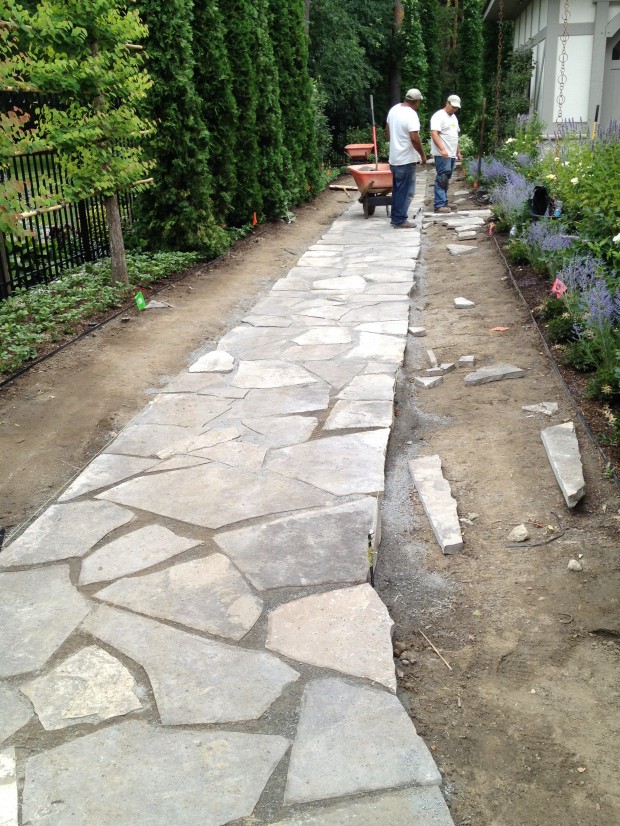 This walkway will get my client, her garden cart, and her tractor to the back yard. It will also serve as a drainage ditch. The gardens, espaliers and arborvitae will to tolerate too much water. Better that the water lurk beneath the walk, where it can drain away over time. This particular walk has a bed of gravel and sand underneath it. Sand has the properly of settling instantly. Implacably. It will not move. Setting the walk slightly high is important. No one wants standing water, or soil washing onto their walkway.
This walkway will get my client, her garden cart, and her tractor to the back yard. It will also serve as a drainage ditch. The gardens, espaliers and arborvitae will to tolerate too much water. Better that the water lurk beneath the walk, where it can drain away over time. This particular walk has a bed of gravel and sand underneath it. Sand has the properly of settling instantly. Implacably. It will not move. Setting the walk slightly high is important. No one wants standing water, or soil washing onto their walkway.
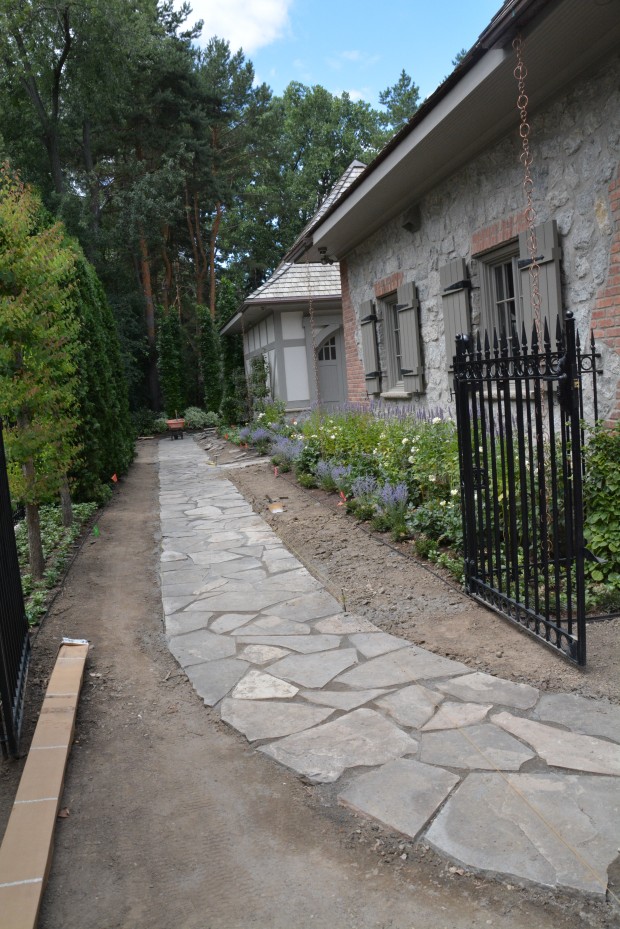 Between the flagstones-slag sand. It settles quickly, and hardens up. But truly, we selected this material as it matched the existing walk. The idea is that eventually, given enough time and weathering, there will be no discernable difference between the original walk and the new one. The walk will look all of a piece.
Between the flagstones-slag sand. It settles quickly, and hardens up. But truly, we selected this material as it matched the existing walk. The idea is that eventually, given enough time and weathering, there will be no discernable difference between the original walk and the new one. The walk will look all of a piece.
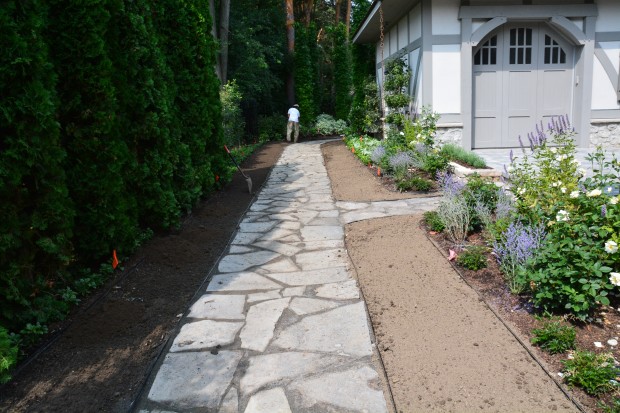 Once the walk was laid, we installed aluminum edger strip all around. In this instance, the order of events is good. The idea was to make the walk rustic. We did not cut any stones. The edger installed after the walk will keep the flagstone where it needs to be. This walk is not just for foot traffic. There is a tractor that will travel this walk.
Once the walk was laid, we installed aluminum edger strip all around. In this instance, the order of events is good. The idea was to make the walk rustic. We did not cut any stones. The edger installed after the walk will keep the flagstone where it needs to be. This walk is not just for foot traffic. There is a tractor that will travel this walk.
 The walk from the front yard, and the walk from the terrace meet in a big lazy Y. Barely visible in this picture, a drain set where the two walks come together will direct rain water into the natural clay walled pond. Great care has been taken to direct the rain water from the street, the landscape beds, and the roof into the pond. The rear yard will be seeded with a sun/shade grass mix, and covered in straw to help retain moisture during the germination period. We covered the big storm drain to the right of the walk with fine netting-to keep the frogs out! Given the prediction of a mild August to come, we will seed this tomorrow, rather than waiting until the end of August.
The walk from the front yard, and the walk from the terrace meet in a big lazy Y. Barely visible in this picture, a drain set where the two walks come together will direct rain water into the natural clay walled pond. Great care has been taken to direct the rain water from the street, the landscape beds, and the roof into the pond. The rear yard will be seeded with a sun/shade grass mix, and covered in straw to help retain moisture during the germination period. We covered the big storm drain to the right of the walk with fine netting-to keep the frogs out! Given the prediction of a mild August to come, we will seed this tomorrow, rather than waiting until the end of August.
 A walkway is a means by which to get from one place to another, yes. But it can also be a beautiful landscape feature. It can help to organize a landscape. It can be built over a swale designed to drain water away. It can be strong enough to provide a roadway for a tractor. Or slight enough for occasional foot traffic. I can be formally designed, or rough and ready. I can provide a beautiful edge to a garden. The materials and construction style chosen can say much about the personality of the place, and the eye of the gardener. It can be narrow in those places to pass by, and wider in those places designed to invite a visitor to linger. A walk can be brisk, or slow. A great walk is a way to make a great garden better.
A walkway is a means by which to get from one place to another, yes. But it can also be a beautiful landscape feature. It can help to organize a landscape. It can be built over a swale designed to drain water away. It can be strong enough to provide a roadway for a tractor. Or slight enough for occasional foot traffic. I can be formally designed, or rough and ready. I can provide a beautiful edge to a garden. The materials and construction style chosen can say much about the personality of the place, and the eye of the gardener. It can be narrow in those places to pass by, and wider in those places designed to invite a visitor to linger. A walk can be brisk, or slow. A great walk is a way to make a great garden better.
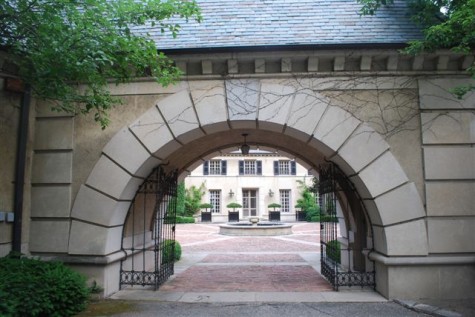
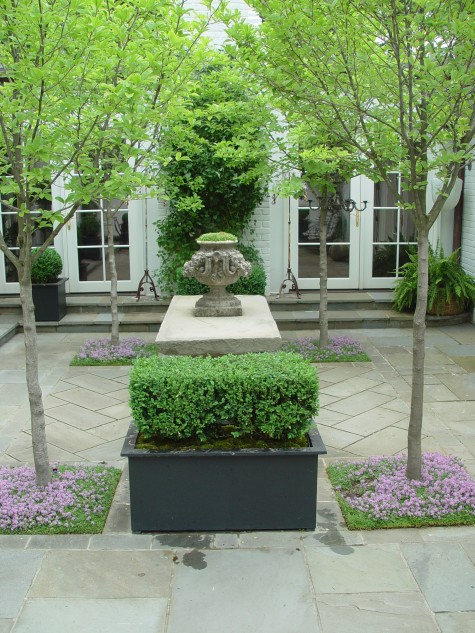
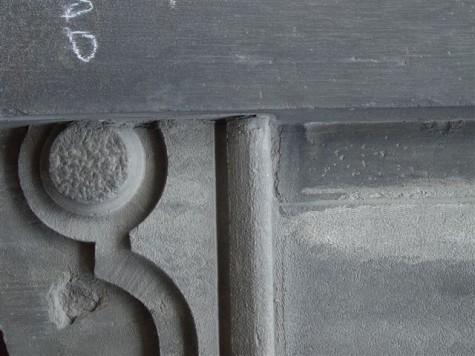 Montreal has many stone buildings. It seems sensible that a City build in such a fierce climate would be made of stone, for permanence. This feeling of permanence gives garden objects, made of stone, great cache. So many things in a garden are ephemeral; the stone by contrast speaks quietly to great age.�
Montreal has many stone buildings. It seems sensible that a City build in such a fierce climate would be made of stone, for permanence. This feeling of permanence gives garden objects, made of stone, great cache. So many things in a garden are ephemeral; the stone by contrast speaks quietly to great age.�
